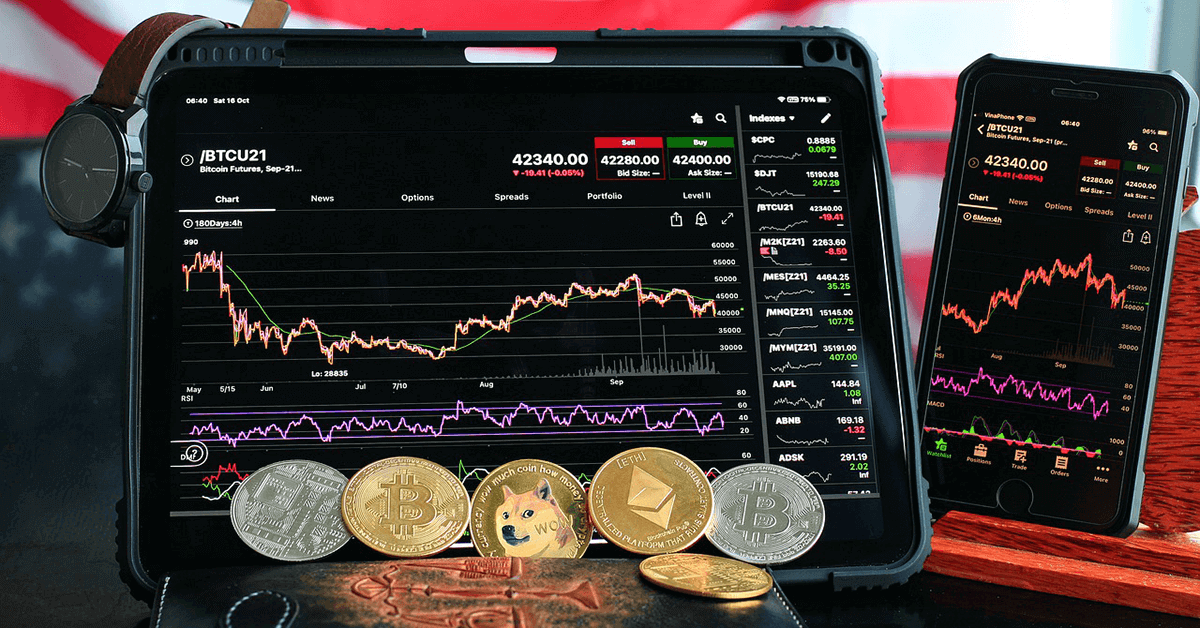History of (ADA) Cardano Cryptocurrency
Date: 2021-11-07
Cardano is the first blockchain platform to garner widespread media attention around the world. This platform is built on top of a decentralized technology known as consensus. Structured with numerous layers for enhancing adaptability. This article will cover everything you need to know about this fast-growing cryptocurrency.
How does it function?
In the third generation of decentralized proof-of-stake systems, Cardano is the leading contender. It's a distributed ledger technology (DLT) built to replace proof-of-work networks. The infrastructure load of rising expenses, energy utilization, and long transaction times constrain Ethereum's growth. Cardano can benefit from recent technological advances in areas such as security, sustainability, and energy efficiency.
Charles Hoskinson, a co-founder of Ethereum, a blockchain-powered by proof-of-work says recognized the impact of these issues on blockchain networks and took steps to address them. Ada, Cardano's principal cryptocurrency, was developed in 2015, and the platform and a token were launched in 2017, respectively.
Cardano's original PoS protocol, Ouroboros, was developed during the project's early stages and has since been secure. The first to be influenced by sophisticated academic research, though. The research-based framework anchors each development phase or era in the Cardano roadmap, it improves outcomes by combining peer-reviewed ideas with scientifically-proven approaches.
Here's a quick rundown of what's happened:
Cardano's Bryon phase, which supports ADA transactions solely, was initially made available to the public on September 29, 2017. Jeremy Wood and Charles Hoskinson, two of the company's founders, have previously worked on the Ethereum project. The organization, however, broke away from Ethereum because of disagreements over objectives. By improving the language and the VM plan, Cardano maintained its prominence in the crypto market for a short period.
These increases came as a direct response to the Ethereum network's problems. When the platform decided to diverge from its rivals, it began engaging with universities across the country academics. A cryptocurrency initial coin offering (ICO) was carried out to raise money. An estimated $62 million was raised from investors all across the world.

The funds were used to expand the ADA system. To better understand cryptocurrencies, Cardano began as a research project in 2015. Shelley, the following phase, was released in July 2020. It increased the decentralization of the network and allowed ADA holders to stake their tokens. The Alonzo hard fork and native token issuance are included in Goguen, the third stage. The last two stages are called Basho and Voltaire, and they deal with scaling and on-chain governance, respectively.
Cardano, the cryptocurrency:
Identity management and traceability are two of Cardano's most valuable uses. Processes requiring the collecting of data from numerous sources can be streamlined and simplified using the former application.
A product's manufacturing procedures can be tracked and audited with this software, which can be utilized from the point of manufacture to the end of the sale. Complete the products and eliminate the market for knockoffs by putting the final touches on them. Cardano has made a name for itself as an Ethereum rival. Using smart contracts as an example, both platforms are widely used.
With the objective to create a system that is both connected and decentralized. Cardano has anointed it as an improved version of Ethereum. A third-generation platform that improves on Ethereum's second-generation credentials. Unbanked people around the world can use the blockchain platform's financial services.
Cardano's partners share oversight and duties for the evolution of the protocol ecosystem, which is decentralized:
Cardano Foundation is a non-profit group known as the legal guardian of the Cardano brand, it is responsible for managing and regulating the cryptocurrency. In addition to Cardano Foundation, there is also IOHK and EMURGO.
The foundation increases the protocol's global prominence. Builds relationships with decision-makers, regulators, and academics to develop use cases. Cardano was built by IOHK, a software engineering, and technology firm. That also has a blockchain-education research division.
As part of its educational purpose, IOHK collaborates closely with academic partners. But also increase the Cardano protocol's long-term scalability by utilizing the most recent peer-reviewed research. Scientific studies to guide platform improvements before they are put into action.
EMURGO is the Cardano protocol's primary global technology partner, and it is responsible for accelerating commercial adoption infusing its blockchain system with businesses from a variety of different areas.
When it comes to cryptocurrency, what makes Cardano stand out?
Cardano uses a peer-reviewed methodology for their cryptocurrency. To use the newly offered features, academics first develop, review, and agree on them. For example, the Ouroboros consensus algorithm network's code is written in the widely popular Haskell programming language. Cardano's creators have penned several scholarly papers outlining the platform's features and capabilities.
For the time being, the Ethereum network relies on a proof of work consensus procedure to verify transactions. An extremely energy-intensive system that is limited in the number of transactions it can simultaneously handle. Cardano makes use of proof of stake, which is less power-intensive than other cryptocurrencies.
The network chooses and validates blocks using an algorithm called Ouroboros. Proof-of-stake proponents argue that a consensus process based on staking makes blockchain networks more secure. More protected while using less energy and leaving less of a carbon footprint.
Developing a Cardano Token Has Five Phases:
To turn the network into a decentralized application, Cardano is being constructed in five stages (DApp). A platform for developing multi-asset ledgers with independently validated smart contracts. Each of the five phases is named after a significant historical figure and is commonly known as an era.
There are five eras in Cardano history:
• A building's foundation (Byron era)
• Contracts with smart features (Goguen era)
• Increasing and decreasing (Basho era)
• It's time for some change in government (Voltaire era)
• Elimination of government centralization (Shelley era)
How does Cardano work?
Cardano attempts to address some of the problems that have arisen as blockchain technology has been adopted extensively. With Cardano, challenges like scalability, interoperability, and decentralization will be addressed. The design concepts and engineering best practices for long-term sustainability.
Scalability:
Cardano was able to process ten transactions per second in its early days. However, Hoskinson just recently published a paper outlining a different approach to network scaling called Hydra. To handle off-chain transactions, Hydra uses state diverts, a Layer 2 scaling structure. Cardano can now measure over 1,000,000 transactions per second, thanks to this breakthrough innovation.
Security and interoperability:
It's Cardano's goal to familiarise the market with conventions that will make it easier for networks to communicate with one another. Models for blockchain administration are incorporated as upgrade protocols and capabilities into these frameworks.
Currently, the platform has privacy, security, and decentralization principles in place. The Work of the Ouroboros, Cardano's new consensus method is based on this principle. Ouroboros is a proof-of-stake protocol based on a chain approved by randomly selected leaders. Every other blockchain gives a reward to the node that contributes a new block. Epochs are defined intervals of time that are used to split physical time into periods.

Slots are comparable to working in a factory in terms of schedule. An epoch is currently five days long, while a slot is one second long. In this case, there are no hard and fast rules; anything can be changed if a better solution is discovered later on. When one thing comes to an end, a new one is born into existence. A "lottery" system selects the slot leader for each of the available slots.
The following are the responsibilities of a slot leader:
• Updating the Cardano blockchain to include newly-created blocks
• Confirming the authenticity of financial transactions
• Creating blocks for transactions
For Ouroboros to function correctly, only a tiny number of ADA holders need to be online and connected to the network. Stake pools are a feature incorporated into the algorithm to reduce energy consumption further. The Ada community can form stake pools and choose a few people to represent them during protocol execution. They create blocks even if sure miners are not online and make participation easy while still assuring that blocks are created.
Additionally, Cardano is working on building an innovative contract platform that will serve as a reliable and secure alternative. A safe environment in which to build enterprise-level decentralized applications.
Project Catalyst, a democratic on-chain governance solution, will be used by the Cardano team shortly, to be in charge of the development and implementation of new projects. Project Catalyst will be used to cover future costs, and their treasury management system will be redesigned accordingly. Atala PRISM, Atala Trace and Atala SCAN are the three products developed by the Cardano foundations.
The foreseeable future
A report from crypto VC Outlier Ventures in September 2021 stated that, In terms of monthly active developers, Cardano came in second only to Ethereum. Cardano was also the most popular cryptocurrency on GitHub from July 2020 to June 2021, according to data compiled by CoinDesk. The Alonzo Mainnet has been launched in September 2021, bringing mass use to the cryptocurrency.
